Welcome back, and welcome to Part One in our Women in Horror Month 2018 round table discussion! This year, I’m thrilled to interview nine incredible female authors who are creating some of the very best and most cutting edge work in horror literature today.
So let’s get started with the celebration of these awesome women in horror!
As a writer, what attracts you to the horror genre? Was there a particular story or film or even character that made you say, I want to do that, when you were younger?
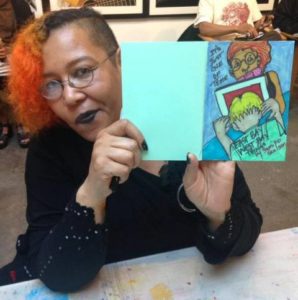 Sumiko Saulson: Horror is the genre best suited for exercising personal demons and I have enough of them to give me an endless supply of psychologically disturbing and thought-provoking plot ideas. If I didn’t have such a trauma-filled past and sometimes, present, I might have been attracted to a less spine-tingling, chilling kind of genre. When I was a child, my parents took us to tons of horror movies. I think Dawn of the Dead, It Lives, and some sci-fi dystopian films you don’t necessarily think of as horror such as HG Wells’ Time Machine most influenced me to write horror. I also read a great deal, and from an early age, so reading had more of an influence on my decision to write horror than you might imagine. I read my first novel in the fifth grade; Peter Straub’s Ghost Story. I inhaled Stephen King and Edgar Allan Poe throughout junior high and high school. Some of the young adult and juvenile fiction I enjoyed was on the scarier side, such as Susan Cooper’s relatively dark fantasy series, Over Sea, Under Stone, of which The Dark is Rising is the most well-known title.
Sumiko Saulson: Horror is the genre best suited for exercising personal demons and I have enough of them to give me an endless supply of psychologically disturbing and thought-provoking plot ideas. If I didn’t have such a trauma-filled past and sometimes, present, I might have been attracted to a less spine-tingling, chilling kind of genre. When I was a child, my parents took us to tons of horror movies. I think Dawn of the Dead, It Lives, and some sci-fi dystopian films you don’t necessarily think of as horror such as HG Wells’ Time Machine most influenced me to write horror. I also read a great deal, and from an early age, so reading had more of an influence on my decision to write horror than you might imagine. I read my first novel in the fifth grade; Peter Straub’s Ghost Story. I inhaled Stephen King and Edgar Allan Poe throughout junior high and high school. Some of the young adult and juvenile fiction I enjoyed was on the scarier side, such as Susan Cooper’s relatively dark fantasy series, Over Sea, Under Stone, of which The Dark is Rising is the most well-known title.
Anya Martin: That’s a tough question because I can’t remember a time when I wasn’t drawn to horror and monsters. For me, the earliest “gateway” that I remember is Dark Shadows, which my parents were watching daily from when I was 2. By the time I was 3 or 4, my dad started me watching monster movies on TV and my earliest memories are seeing AIP, Universal, and Toho films. The only nightmare I ever remember getting as a child from a horror movie was after seeing House of Wax, with Vincent Price. I always rooted for the monster to survive and find a safe haven away from the mean human race. I also was drawn to the giant monsters, King Kong, Godzilla and Gorgo—which probably was connected to my other early passion—dinosaurs. At age 6, I wanted to be a paleontologist and I’m still a huge dinosaur buff. The one thing that did creep me out, to my mother’s frustration, was dolls. They even smelled bad! That rancid rubber smell—ewwwww!!! I got to confront that fear years later with artist Mado Peña in the comics short, “Stuffed Bunny In Doll-Land,” which appeared in Womanthology (IDW, 2012).
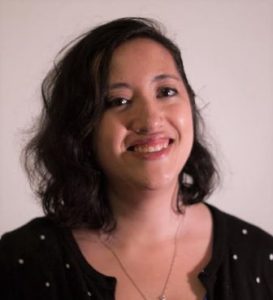 Nadia Bulkin: I grew up in ghost-obsessed Indonesia, and ghost stories have always terrified and intrigued me. I find the idea of the ghost as “a tragedy condemned to repeat itself time and again… an emotion suspended in time,” to quote The Devil’s Backbone, to be a very powerful one that incidentally relates very directly to Indonesia’s struggles with traumatic national memory and collective guilt, two concepts I write about a lot. I like to focus on social and political themes, particularly those related to fear and suffering and exclusion and revenge, and in my opinion there’s no better toolkit with which to write about the world than through horror (this may say more about how I see history than anything else!). I’ve always enjoyed the horror genre for the adrenaline and the off-kilter darkness (like the black keys on a keyboard), but it was Shirley Jackson’s The Haunting of Hill House that made me buy into being a horror writer, because for the first time in any genre I saw a character that I could personally relate to: Eleanor Vance. Reading Jackson convinced me that it was possible to do what I wanted to do within horror.
Nadia Bulkin: I grew up in ghost-obsessed Indonesia, and ghost stories have always terrified and intrigued me. I find the idea of the ghost as “a tragedy condemned to repeat itself time and again… an emotion suspended in time,” to quote The Devil’s Backbone, to be a very powerful one that incidentally relates very directly to Indonesia’s struggles with traumatic national memory and collective guilt, two concepts I write about a lot. I like to focus on social and political themes, particularly those related to fear and suffering and exclusion and revenge, and in my opinion there’s no better toolkit with which to write about the world than through horror (this may say more about how I see history than anything else!). I’ve always enjoyed the horror genre for the adrenaline and the off-kilter darkness (like the black keys on a keyboard), but it was Shirley Jackson’s The Haunting of Hill House that made me buy into being a horror writer, because for the first time in any genre I saw a character that I could personally relate to: Eleanor Vance. Reading Jackson convinced me that it was possible to do what I wanted to do within horror.
Catherine Grant: My father gave me a collection of Edgar Allan Poe tales when I was ten after I asked to watch Silver Bullet. I don’t think I was ready to read King at that point, but a year later I found a copy of IT in a box underneath my father’s desk, and then I rented Creepshow on summer vacation and that was it, I was hooked. I found a Stephen King biography in the library when I was twelve. Reading it, it was the first time I realized that being a writer was a career, and I began writing stories with the goal of some day being a published author.
Denise Tapscott: One thing that attracts me to the horror genre is that there is a certain freedom you have creating stories. There aren’t any specific structures or rules you must follow as other writers do in the romance and mystery genres. There’s a short story I read when I was younger, by Stephen King called “Mrs. Todd’s Shortcut” that really grabbed my attention. I loved the idea that this woman transformed when she drove her car, faster and faster every day. I wished that it were almost true so that I could do the same (I should mention that I used to be a speed demon back when I had a little 1992 Honda CRX SI). The more I thought about it, I wished that I could come up with a clever story with an awesome twist too. It took some time, but I eventually grabbed a ticket on the writing horror train. It’s been a fantastic ride so far.
Kenya Moss-Dyme: Besides required reading in school, one of the books that made me want to write horror was The Amulet, by Michael McDowell. I read it when I was about 14 and it involved an amulet circulating in a small town; whoever possessed it would commit a horrible act of violence against someone they disliked for whatever reason. What I loved about the book is that the characters were motivated by different things, some for as little as irritation, but it had that small hometown feeling similar to a lot of Stephen King’s stories. They’re sweet normal folks who just snap, for no reason other than wearing or holding the amulet. It was still a few more years before I wrote any actual horror, because I spent the next few years writing about teens doing teen-like things.
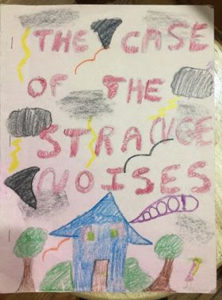 Rebecca Allred: Writing horror appeals to me because it’s a genre in which I can, more or less, safely explore and attempt to reconcile my own fears and anxieties. Terrible things happen, but there’s a sense of control that comes from creating and resolving conflict, especially if you’re like me and sometimes feel like everything is completely out of your control! The first I’m aware of that I wanted to write stories “like that” was when I got my hands on a copy of Scary Stories to Tell In the Dark. I don’t recall which volume it was, but the story “The Furry Collar” scared the CRAP out of me. Even now sometimes when I’m half asleep and hear my cat coming down the stairs, I imagine a headless girl slowly making her way into my room… That said, I was writing “scary stories” well before I was ten. “The Case of the Strange Noises” is my earliest surviving work. Maybe someday it’ll be a collector’s item!
Rebecca Allred: Writing horror appeals to me because it’s a genre in which I can, more or less, safely explore and attempt to reconcile my own fears and anxieties. Terrible things happen, but there’s a sense of control that comes from creating and resolving conflict, especially if you’re like me and sometimes feel like everything is completely out of your control! The first I’m aware of that I wanted to write stories “like that” was when I got my hands on a copy of Scary Stories to Tell In the Dark. I don’t recall which volume it was, but the story “The Furry Collar” scared the CRAP out of me. Even now sometimes when I’m half asleep and hear my cat coming down the stairs, I imagine a headless girl slowly making her way into my room… That said, I was writing “scary stories” well before I was ten. “The Case of the Strange Noises” is my earliest surviving work. Maybe someday it’ll be a collector’s item!
Carrie Laben: It’s funny, I never identified strongly with horror as a kid (although I did very much favor ‘true’ stories about ghosts and cryptids etc.) I thought I was too much of a wuss for “real” horror, which came in the form of movies where girls got cut up. Everyone around me read Scary Stories to Tell in the Dark and Goosebumps, and later V.C. Andrews and Stephen King and Dean Koontz – it didn’t set you apart. I do remember reading Katherine Dunn’s Geek Love when I was about 14 and thinking “wow, there’s no limit to how weird you can get and be published” so that probably helped.
Brooke Warra: I have a very vivid memory of being a young child equally fascinated and terrified of Mora (the turtle monster) from The Never Ending Story, as well as the Harpy from The Last Unicorn. There was a kind of cerebral horror in those characters, they are close enough to creatures that exist in our “real world” that the unnaturalness of them, the danger they represent becomes chilling, and I think that as a toddler in the 80’s, growing up in a house surrounded by acres of forest where such creatures could be lurking, I was really influenced by that and drawn to that sort of thing. I honestly do not remember a time that I did not want to write and tell dark stories, but that decade was a wonderful time to cultivate that dream.
As a female horror writer, what does Women in Horror Month mean to you? Do you have any specific activities planned to commemorate Women in Horror Month in 2018?
Sumiko: I’m very excited about Women in Horror Month every year since I first found out about it and participated in it in 2013. This year I am especially excited, because I am working with Nicole Kurtz and Mocha Memoirs Press to put out an anthology, Black Magic Women, which consists of 20 terrifying tales by black women who write horror. I also compile a list called Black Women in Horror, and look forward to reaching 100 women this year! There will be a book, 100 Black Women in Horror – an update to my 2014 title, 60 Black Women in Horror, slated for release in February. Black Magic Women comes out February 15. I’m also producing the third annual SecondLife Women in Horror Treasure Hunt with author Suzi Madron. Come visit us in Avalon if you’re inworld!
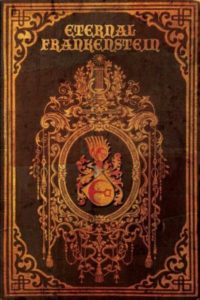 Anya: I’d like to think one day it won’t be necessary, but as long as people—men and women—rattle off their top 10 horror authors or directors, and don’t or barely include women, drawing attention to women authors/filmmakers/artists is needed. I don’t have any specific activities other than this and sharing some of the many great articles which I am sure will be posted this month on social media, but I might do something for my blog ATLRetro.com because there are a number of exciting women horror writers and filmmakers based in Atlanta such as Nancy Collins, Kristi DeMeester, Dayna Noffke, Lynne Hansen and Vanessa Wright who was cofounder of the Women In Horror Film Festival, which debuted in Atlanta last September.
Anya: I’d like to think one day it won’t be necessary, but as long as people—men and women—rattle off their top 10 horror authors or directors, and don’t or barely include women, drawing attention to women authors/filmmakers/artists is needed. I don’t have any specific activities other than this and sharing some of the many great articles which I am sure will be posted this month on social media, but I might do something for my blog ATLRetro.com because there are a number of exciting women horror writers and filmmakers based in Atlanta such as Nancy Collins, Kristi DeMeester, Dayna Noffke, Lynne Hansen and Vanessa Wright who was cofounder of the Women In Horror Film Festival, which debuted in Atlanta last September.
Nadia: I wrote about my feelings on Women in Horror Month last year, and those feelings of frustration at being caught between a rock and a hard place in the midst of this particular culture war hasn’t changed. I think Women in Horror Month comes from a place of good intent, but it also kind of saddens me, and I don’t do anything to commemorate it. What frustrates me these days is twofold. First, the assumption that there is a special “lady-horror” genre and “lady-horror” writer that is separate in content and style from “real horror,” mostly because that does nothing to acknowledge that male horror writers are writing from a particularly male point of view, except that point of view is considered “standard,” though also because I always get nervous when people – including, often, women! – get too specific about the kind of subjects women like to write and read about. I’m all about mean girl drama and witches, but I also do war and sport. Second, mainstream horror continues to astound in its understanding of women primarily as rape victims. Really quite remarkable.
Catherine: Women in Horror Month is a time for the industry to stop doing the dance, look around, and call out peers that might not be getting proper recognition because of their gender. It feels silly writing that out. Should gender discrimination still be a thing in 2018? I’d really love to see a day when special recognition months like WIHM aren’t needed, because our society is so woke that unconscious bias and casual discrimination are no longer a problem. I plan on doing my part by recognizing female authors that have affected my writing, be it as a peer, mentor, or literary influence.
Denise: As a female horror writer, Women in Horror Month means it’s time to celebrate my creative sisters! I don’t have any specific plans to commemorate the month but I will do whatever I can do to support as many women as possible. Perhaps I will find a way to use social media to promote Women in Horror. The least I could do is buy more books! I have lots of stories to read and I’m more than happy to add more to my Kindle.
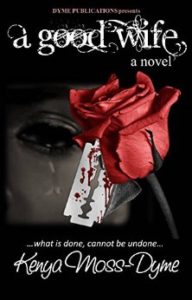 Kenya: This is such an exciting month for us, with all of the focus on the women in horror, not just writers but I love that we spotlight the actors and curators of the genre as well. I always enjoy learning about talent that I wasn’t aware of and especially the look back at how far we’ve come and the contributions to the industry. Of course, we’re focused on US all year round, but it’s nice to have the stage for one month anyway. It really raises the exposure on just how powerful our voices are, from within. I am planning to highlight some kick-ass female-driven horror stories on my page next month so I’m putting together my list now. As authors, even our work doesn’t always feature strong heroines, so I’d like to showcase that this year!
Kenya: This is such an exciting month for us, with all of the focus on the women in horror, not just writers but I love that we spotlight the actors and curators of the genre as well. I always enjoy learning about talent that I wasn’t aware of and especially the look back at how far we’ve come and the contributions to the industry. Of course, we’re focused on US all year round, but it’s nice to have the stage for one month anyway. It really raises the exposure on just how powerful our voices are, from within. I am planning to highlight some kick-ass female-driven horror stories on my page next month so I’m putting together my list now. As authors, even our work doesn’t always feature strong heroines, so I’d like to showcase that this year!
Carrie: This is the first time I’m really actively participating in any explicitly women-in-horror themed activities. I love that this discussion exists, I’d love to see it exist all year, and I love knowing that every February I’m going to learn the names of new writers I should check out.
Brooke: It’s been a really positive experience every year to see women in this genre support and encourage each other. Every WIH month, I come away with new friends and a to-be-read list as long as my arm. This year, I’d like to focus on promoting other women in horror through my social media and blog posts, whether they are authors or bloggers, podcast producers, voice actors, I mean, the list is endless.
So that’s part one of our Women in Horror 2018 discussion! Head on back here next week as we talk about underrated horror stories by women as well as how the social upheavals of the last year have impacted these authors’ stories.
Happy reading!
